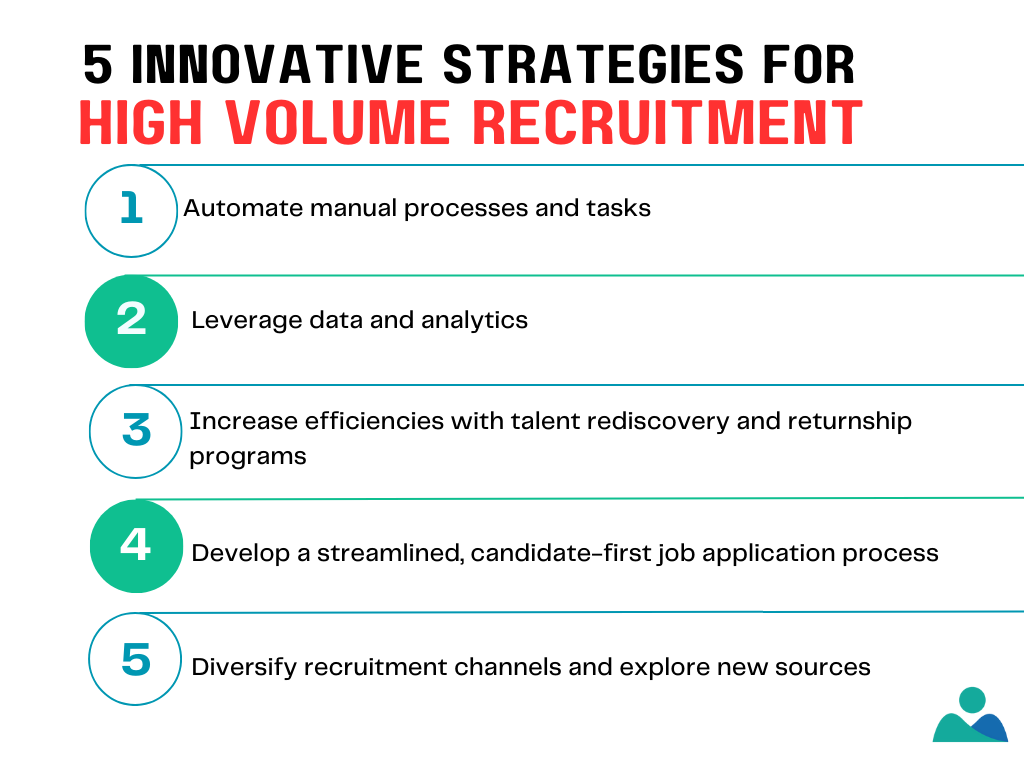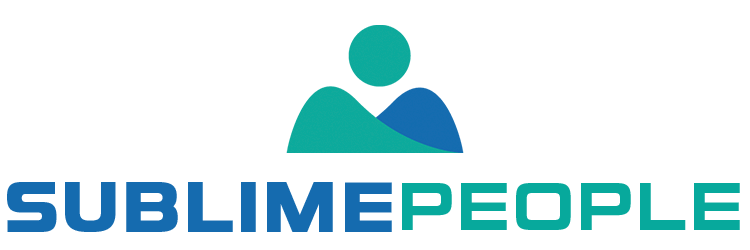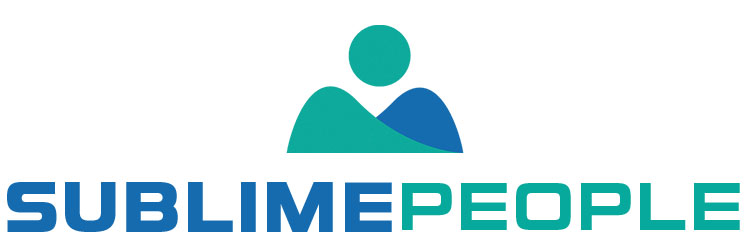To keep up with the increasing demand for skilled workers, many companies are turning to high-volume recruitment strategies. This can be a daunting task, but some innovative strategies can help make the process more efficient and effective. By using data-driven approaches and leveraging technology, companies can streamline their recruitment efforts and find the best talent for their open positions.
In this blog post, we will discuss some of the most innovative and effective strategies for high-volume recruitment. So if your company is looking to fill multiple positions quickly, read on for some helpful tips!
In this Article:
What is high-volume recruitment?
High-volume hiring refers to either the process of hiring a lot of staff in a short period or for single job roles with hundreds of candidates. Recruiters often use this hiring process for mass hiring or recruitment drives, such as seasonal positions. It also helps recruitment teams to reach a larger talent pool and narrow down the list of potential candidates quickly.
The hiring funnel is tasked with reviewing many applications to determine who should progress to the interview stage. To make this decision, they may use tools such as AI-powered recruiting software.
How do you deal with high-volume recruitment?
There are a few recruitment strategies that recruitment teams can use to manage high-volume recruitment. These include:

1. Automate manual processes and tasks
Mass hiring is a tough task. It requires the hiring team to complete every step manually and tediously, which can put tremendous strain on the team. Automation of recruiting process is the best way to tackle this issue, as it automates mundane tasks like short-listing and tracking candidates. This includes a job description, candidate surveys and recruitment software to automate recruitment processes.
2. Leverage data and analytics to optimize your hiring pipeline
Using recruitment analytics, hiring managers can understand the effectiveness of their recruitment process. This enables them to measure key recruitment metrics, such as the time-to-hire and drop-off points in their hiring funnel. Recruitment teams can use this data to optimize their hiring process and ensure that they are targeting the right candidates with job postings.
3. Increase efficiencies with talent rediscovery and returnship programs
Rediscovery and returnship programs are fantastic recruitment tools to help employers quickly find highly qualified candidates within their existing talent pool. These programs can include returning alumni, past employees, or contractors who have already worked with your company in the past. Rehiring these potential candidates can save you both time and cost involved in recruitment, as well as help you quickly fill your open positions.
4. Develop a streamlined, candidate-first job application process
A hiring process is often overwhelming for job seekers, especially if it’s a volume hiring process. To hire candidates with top talent, streamline your process, and be candidate-friendly. This involves making sure the job posting is clear, providing ample information about the role and company culture, as well as having a smooth application and interview process with timely feedback.
5. Diversify recruitment channels and explore new sources
When it comes to recruitment, traditional job boards and social media are no longer the only sources. There are new recruitment channels that recruitment teams can explore, such as candidate referral programs, recruitment marketplaces, and recruitment software. Leveraging these channels will help recruitment teams reach a larger talent pool of potential candidates and increase their chances of sourcing suitable candidates quickly.
What is the difference between high-volume hiring and a regular recruitment process?
Although both recruitment processes involve recruiting people, the main difference is that high-volume recruitment involves mass recruiting in a short period. The regular hiring process involves the recruitment of a single job role with fewer candidates.
Here’s how high-volume hiring and regular recruiting differ at each stage:
Sourcing and short-listing resumes
Regular recruitment involves manually sourcing resumes or relying on recruitment agencies, while high-volume recruitment typically involves setting up job postings on multiple platforms, such as job boards and social media. Once the resume shortlisting process is complete, suitable candidates can be selected for interviews.
Interview process
Regular recruitment typically involves conducting face-to-face interviews and aptitude tests to assess a candidate’s suitability, while high-volume recruitment may involve phone interviews or automated video interviewing platforms to reduce the recruitment process time.
Onboarding process
Regular recruitment involves training and onboarding of new hires individually and in-depth induction processes, but with high-volume recruitment, the process is streamlined and limited to essential topics.
Application process
When hiring on a smaller scale for specific job roles, recruiters often pay more attention to their applications and can easily communicate with applicants about the role and work environment. However, when hiring in high volumes, recruitment teams often have to make quick decisions about potential candidates based on their resumes and other documents. As a result, recruiters may not provide thorough feedback.
The assessment phase
In regular recruitment, recruiters may assess potential candidates through a series of one-to-one interviews and aptitude tests. However, with high-volume recruitment, potential candidates are usually assessed through automated systems, such as online assessments, to save time and resources.
They must tailor the hiring process to meet the needs of both the organization and potential employees. Companies should focus on creating a seamless recruitment process, from job postings to onboarding. The recruitment process should also consider company culture and the potential impact of recruitment outsourcing.
Interview process
The hiring process should also include a comprehensive interview process that is not only effective but also maintains the candidate’s experience. Interviews are key to recruitment and allow recruiters to assess the suitability of potential candidates for the role.
When recruiting in high volumes, recruitment teams should focus on talent acquisition strategies, such as job boards, recruitment software, and recruitment process outsourcing to ensure that they can source the right candidates quickly and efficiently.
Selection process
In regular recruitment, recruiters can typically spend a significant amount of time assessing potential candidates and retraining the recruitment process if necessary. To retain talent, recruitment teams should ensure that they are hiring the right candidates that fit the job role and the company culture.
However, in high-volume recruitment, recruiters must ensure that their hiring process is streamlined, with specific recruitment functions such as screening applicants and reviewing resumes quickly.
What are high-volume hiring process challenges?
High-volume recruitment poses several challenges. Below we describe some of them and provide a solution to overcome those challenges.
Attracting top talent
One of the biggest challenges in high-volume hiring jobs is attracting top talent. With so many positions to fill, it is overwhelming to find top talent. Competition for top talent is fierce, and many companies will offer higher salaries and better benefits to attract the best candidates.
How to overcome this challenge
To overcome this challenge during the high-volume hiring process, companies need to focus on creating an attractive process that shows their commitment to talent acquisition. Companies should invest in recruitment software and hiring process outsourcing, as well as create quality job postings with key metrics and data-driven insights into the hiring funnel.
Screening candidates
Another challenge in the high volume hiring process is screening candidates. With so many applications to review, it’s difficult to identify the best talent. It can be time-consuming to review candidates and conduct in-person interviews with each candidate, especially if there are many positions to fill.
How to overcome this challenge
To overcome this challenge during the hiring process, hiring teams should focus on recruitment process optimization. This includes implementing automated recruitment software that can help recruiters easily filter and select candidates based on their qualifications. Recruitment teams should do online assessments or surveys to assess potential candidates quickly and accurately.
Training new employees
Training new employees is another challenge associated with the high-volume recruiting process. With so many new employees starting at once, it’s difficult to provide adequate training. New employees may not have the same level of experience as those who have been with the company for a longer time, which can lead to lower-quality work.
How to overcome this challenge
To overcome this challenge, recruitment teams should focus on the recruitment process re-engineering. This includes identifying gaps, such as lack of training or onboarding materials, and implementing solutions to address these issues. Recruitment teams can work with existing employees to create resources and tutorials to help new hires quickly adapt to their roles.
Managing expectations
Another challenge in high-volume recruiting processes is managing expectations. When a company is hiring many employees at once, there may be unrealistic expectations regarding the start date, hiring timeline, job duties, salary, and benefits. If not managed properly, it can lead to frustration and dissatisfaction among both the new employees and the company itself.
How to overcome this challenge
To overcome this challenge, recruitment teams should focus on recruitment process optimization. This includes implementing recruitment strategies and best practices, such as providing clear job descriptions and expectations regarding the start date, job duties, salary, and benefits. Recruitment teams can use recruitment metrics to track applicants throughout the recruitment funnel to identify any potential drop-off points.
Coordinating schedules
A final challenge in high-volume recruiting is coordinating schedules. When a company is mass hiring, it’s difficult to coordinate their start dates and schedules. This can lead to disruptions in the workplace and may make it difficult for new employees to get acclimated to their new roles.
How to overcome this challenge
To overcome this challenge, recruitment teams should focus on recruitment process automation. This includes using recruitment software to automate the scheduling of new hires and ensure that all new employees start their jobs on the same day. Recruitment teams can create an onboarding program for new employees to help them get acclimated to their roles quickly and efficiently.

A word from SublimePeople
While there is no one silver bullet for high-volume recruitment, a combination of innovative strategies can help you find the best talent. By using the techniques discussed in this article you can cast a wider net and identify the best candidates for your open positions.
Whether you need a recruiter to help with selection, get an automatic pre-selection or just need an easy-to-use interface – SublimePeople can provide you with the perfect solution. Our services include applicant tracking systems, job board integration and analytics tools. Contact us today and take your business to the next level.




